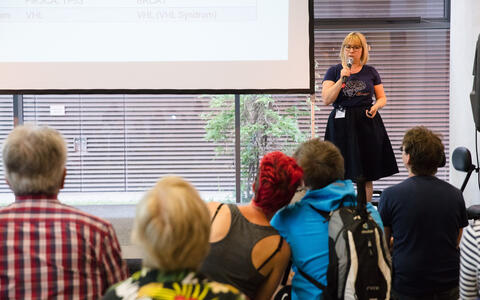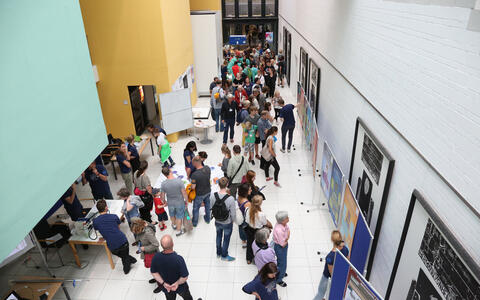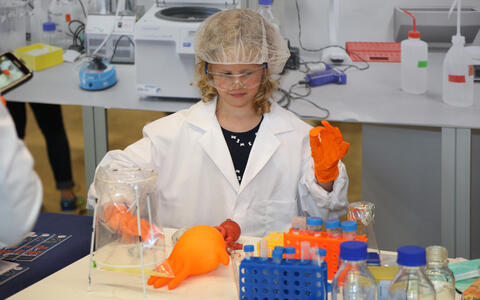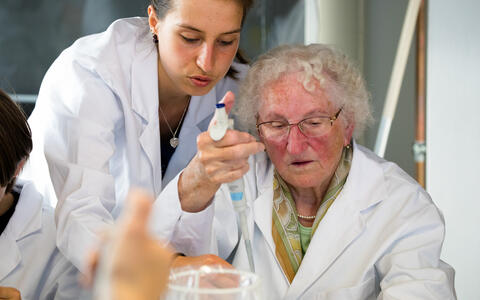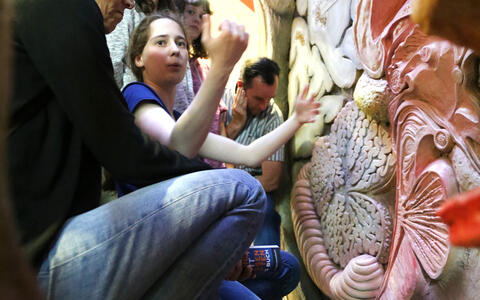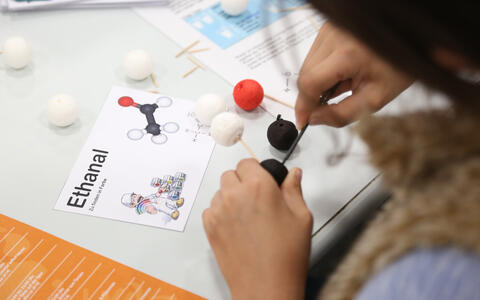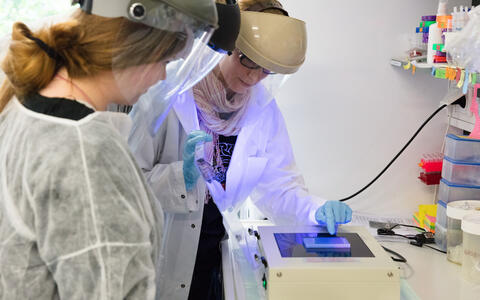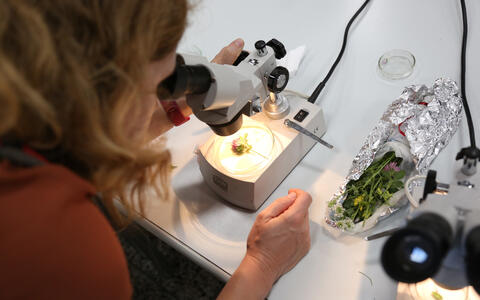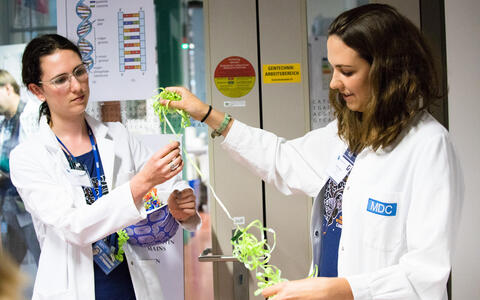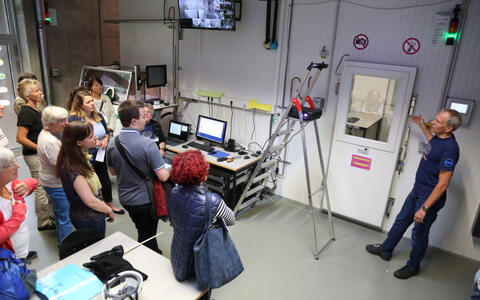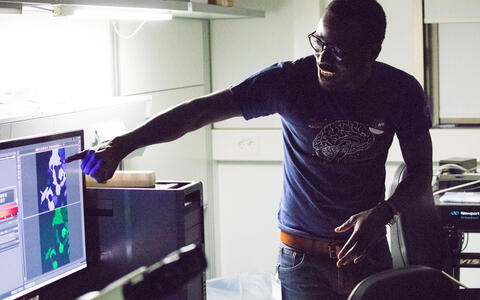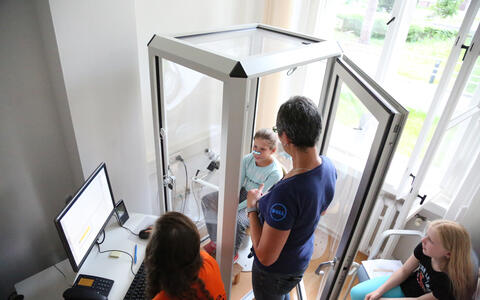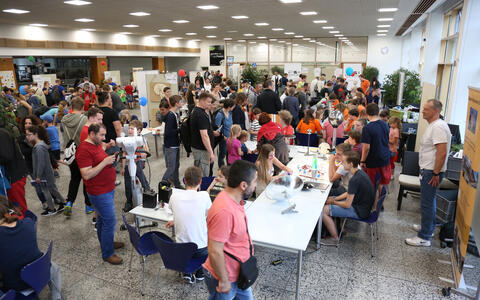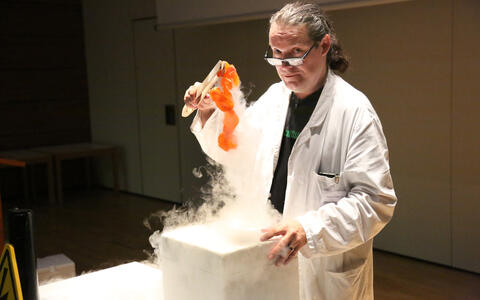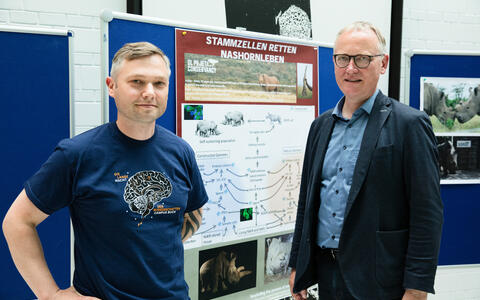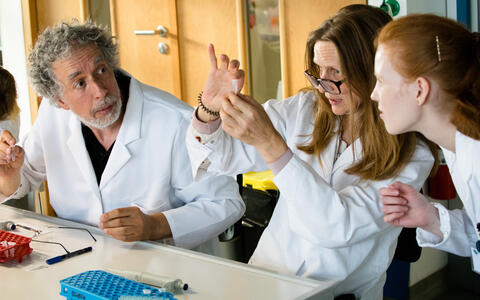Not just another day in the lab
A dozen pair of eyes are directed at Jan Möller. As a PhD student in Martin Lohse's lab, he's working on G protein-coupled receptors (GPCRs). "Where should I begin – do you know what a cell looks like, and what proteins are?" The audience nods. Jan explains what the receptors do – their appearance and functions – and the questions that the lab is currently pursuing. "I was surprised at the level of prior knowledge of the participants," the pharmacist says at the end of the tour. It's his first Long Night of Sciences at the MDC.
He was particularly impressed that so many people came and showed an interest in work that is rather basic, and that one member of the public asked questions about the signaling pathways activated by GPCRs that went beyond textbook knowledge. "I wasn't counting on that," Möller says, but he was truly pleased to be presented with a challenge. It's a motivation to participate next year.
Poodle art from a balloon
Michael Strehle's first lab tour lies long in the past. He works in Carmen Birchmeier's lab, which has participated from the beginning. "The first time I gave a tour I was really nervous and surely overloaded the public with a lot of scientific jargon," he remembers with a smile. In the meantime he has learned how to capture attention from the first slide: It depicts a balloon on the left, and another balloon twisted artfully into the shape of a poodle on the right. Developmental biologists, Strehle explains, want to know how to get from the balloon to the dog – in other words, how a single cell produces a complete organism.
He says he participates in the Long Night because research has an obligation. "Our work costs taxpayers a lot of money," Strehle says. "It's appropriate that at least once a year we stand up and tell people what we're up to. The listeners are really open and interested, and they ask lots of questions." Often they come with something concrete in mind: this year a visitor had specific questions about multiple sclerosis and diseases involving myelinisation. Michael Strehle is a specialist in these topics. The myelin sheath around nerves accelerates the transmission of signals, and one research focus at the MDC is how defects in the formation of the sheaths can be repaired.
Strehle's work involves animal experiments, and it's a theme that often comes up during tours. Most visitors regard the use of animals as necessary, but naturally there are those who see the situation critically. "Despite the difference in opinion, we often have very pleasant discussions in the lab," the scientist reports.
Cancer victims seeking insights into disease research
Annika Fendler's tour begins in a small seminar room with an introduction to cancer stem cells and molecular approaches to tumor therapies – it's standing room only, with people listening from the doorway. This is the fourth time Annika has taken part in the Long Night event. "It's a lot of fun for me to talk to non-scientists about my work," she says. "The level is high, because the people who come to the MDC are usually very well informed."
An expert in kidney tumors, Fendler has plenty of chances for encounters with the public at the event this year: after the lab tour she gives a talk on the theme of personalized medicine. It's followed by a flood of questions about, for instance, how tumor cells in the blood can be used in diagnosis, or what is involved in a "personalized" cancer therapy. At the end of the evening she takes part in the show "Real" or "Fake". In this new format, scientists make statements about science – some true, some false.
Everyone profits from the exchange
One of Fendler's goals is to show that science doesn't take place in an ivory tower, but has relevance for society: "I want my research to make a difference," the biologist says. "I want to take part in finding better forms of therapy for cancer, and in promoting and explaining our work to the public." The benefits don't flow in only one direction; she gets something out of exchanges with the visitors as well. "I always profit from this event. It's motivating, and it changes my view of things." Among the guests are those affected by cancer – either directly, or through a family member – and they have come in search of information and help. For scientists, such contacts aren't a part of daily laboratory routine.
The first time she gave the tour, she wasn't sure whether a longer theoretical explanation would come across. As she was giving her introduction, she got an answer: one of the visitors complained that she had come to take a tour of a lab rather than hear a long lecture. There was an immediate reaction of those around the woman: they had come for information and were enjoying the talk. "People really do want to know precisely what we are doing," Fendler says. And telling them is what motivates her.



